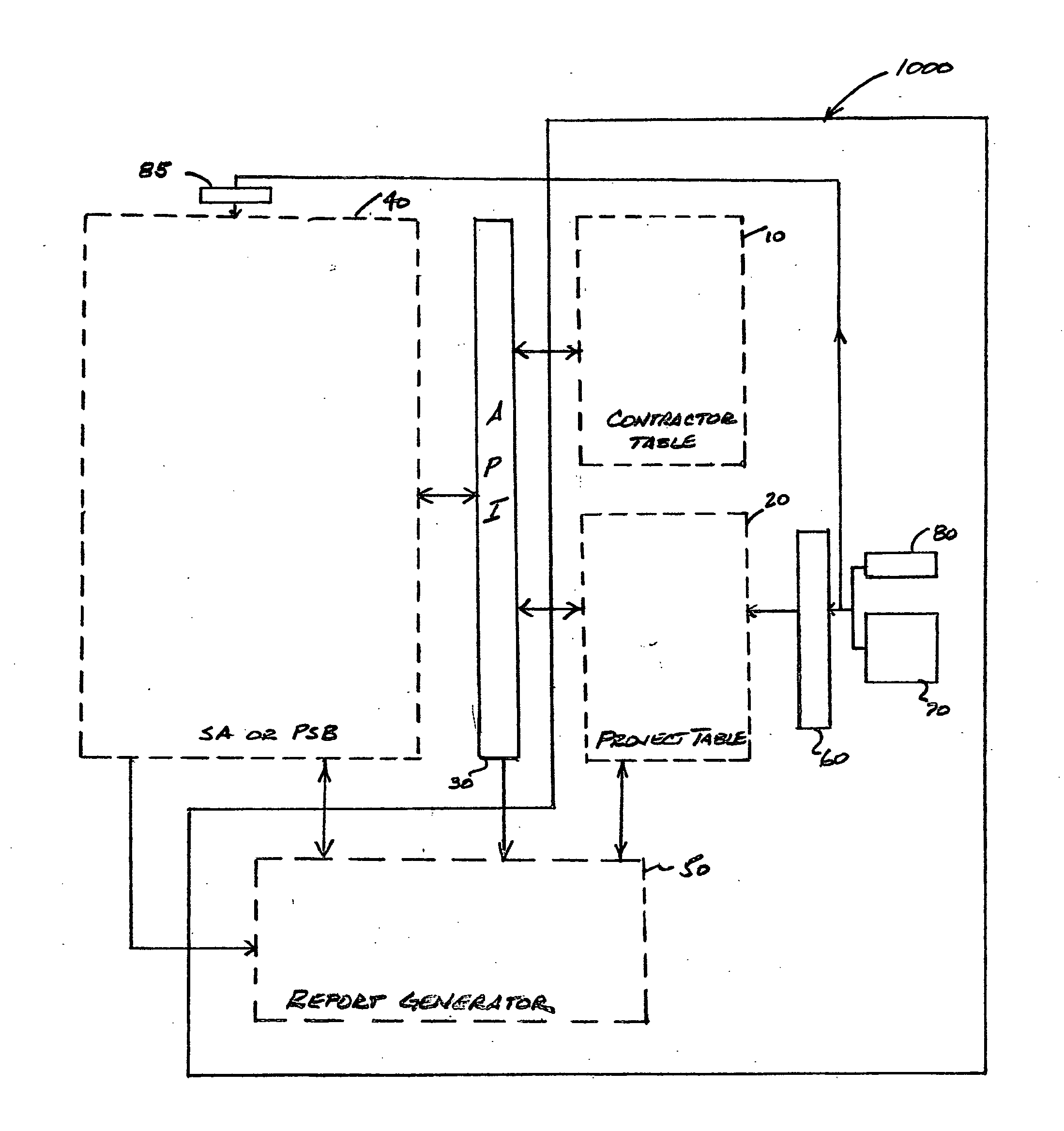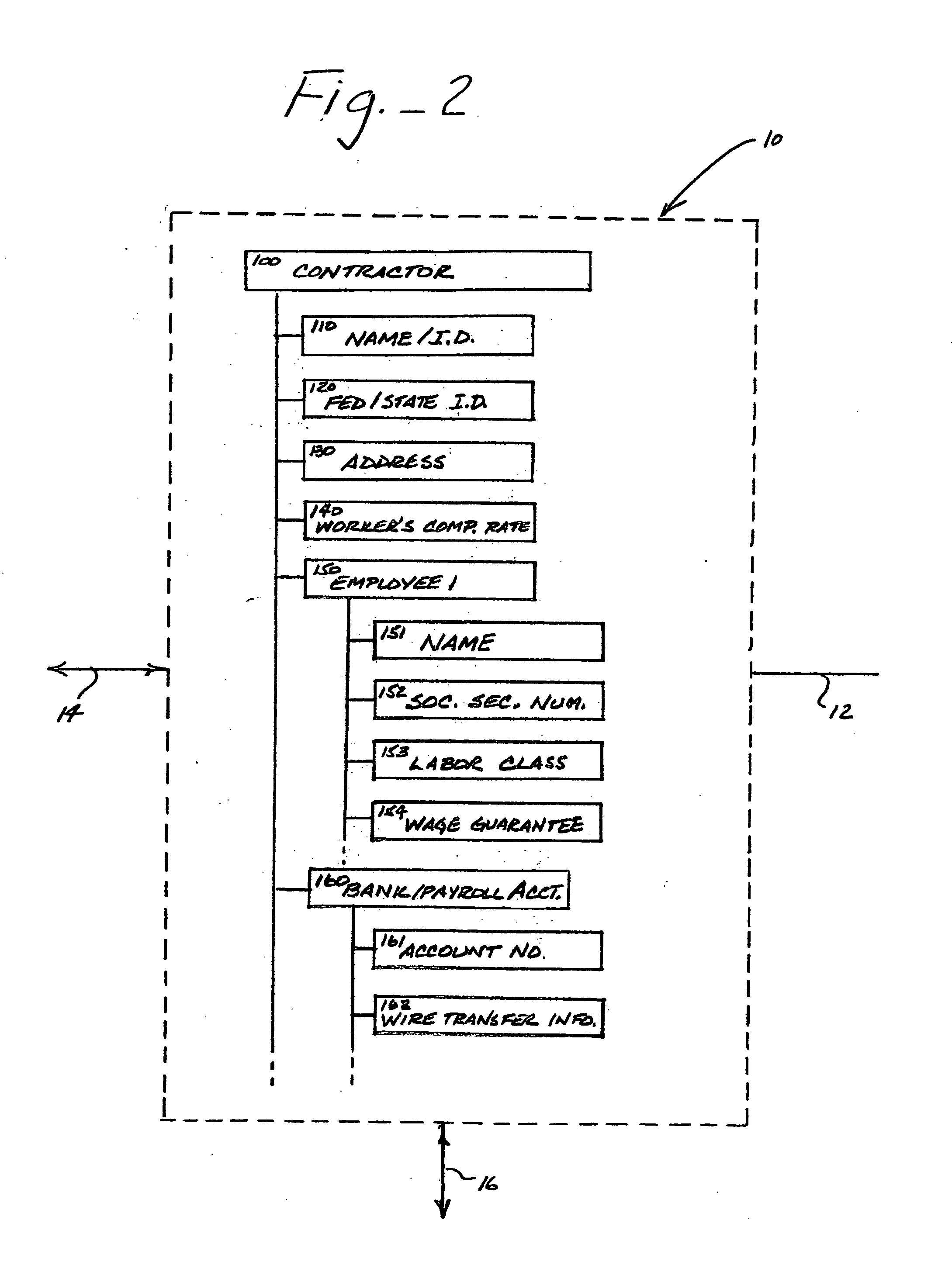A variety of standalone business and payroll tracking computer programs such as Quickbooks®1 and others have provisions for keeping track of and reporting certain of the more standard criteria found in
day to day payroll accounting and reporting common to any employer, but do not have the capability to process the more particularized criteria common to governmental or public works projects requiring complex payroll certification.
These PSB's are subject to an additional
facet of complexity as they perform their function for a number of clients (contractors and non-contractors alike).
At present, PSB's typically struggle to keep up with governmental requirements for certifying and reporting labor cost and usage for public works projects, are woefully inadequate in preventing labor reporting fraud, and perform almost no function which could assist the contractor in managing the application of its labor force pro-actively to assure continued compliance on public works projects.
Some of this complexity stems from not only the aforementioned criteria but the fact that many contractors may perform work on multiple regulated projects at the same time, and may also concurrently work on non-regulated contracts or other work assignments with the same labor personnel, even during the same time period.
PSB's and stand alone computer programs and systems (“SA's”) currently are not set up to meet this complexity and require either custom computer applications maintained internally by the contractor or must be manually tracked and reported by same in order to meet government requirements for certifying prevailing wage compliance on public works projects, while maintaining the flexibility to distinguish between public sector and private works applications of labor.
Because of the complexity faced by PSB's in providing specialized tracking and reporting for contractors engaging in both public and private projects and the generic nature and limitations of the aforementioned SA's, many contractors have found it necessary to resort to the implementation of costly and sophisticated payroll
processing systems in an attempt to satisfy the regulatory requirements for certifying payroll reports or maintain a costly staff of accounting and payroll personnel to meet their reporting obligations.
In many instances, contractors are deficient or inaccurate in their tracking and reporting of necessary criteria, even in some cases, dummying up reports and certifications in order to satisfy regulatory mandates and thereby acting unlawfully.
Unfortunately, many of the sophisticated systems which do exist in the field today fail to accurately certify and report the necessary criteria because: 1) a comprehensive understanding of regulatory mandates and contractor requirements for the adherence to same, which is highly specific to the public works sector, is typically not found in the
knowledge base of the accountants and programmers who create standalone and customized payroll systems: 2) variations in the opinions of government administrators even in the same jurisdiction related to rule interpretation, as well as regulatory and rules changes made by the various jurisdictions quickly render the SA's and customized programs of PSB's and large contractors inadequate; and 3) most if not all SA's do not provide reporting functions satisfactory to enable a contractor to adjust his manpower loading and hence, labor classification ratios in a dynamic sense to pro-actively and timely assure regulatory compliance on contracts or projects requiring minimum percentages of apprentice workers.
The contractor which maintains its own payroll calculation and certification or reporting functions must continually
train and maintain a knowledgeable payroll and accounting staff and its computerized payroll
system at high cost and subject to
significant risk if such maintenance of staff and systems is deficient.
Such a burden increases general and administrative costs thereby making some contractors less competitive in the marketplace.
As pointed out by the Kahn reference, standalone programs are difficult to update on a frequent enough basis to assure continued current compliance with regulatory changes.
The prior art does not appear to demonstrate in standalone or other dedicated payroll
processing programs or systems adequate provisions for tracking the progress of labor classifications against contract targets necessary in meeting minimum apprentice employment requirements, reporting or certification.
While these types of measurements are helpful in a general management sense, as taught, the Kelly reference does not lend itself easily to the realm of contract compliance for public works projects.
In fact, the nature of prevailing wage laws and provisions may prohibit the type of
system taught by Kelly because historically, public works prevailing wage and other labor laws do not comport with schemes such as “piece work” or the crediting back of time on employee accounts and are thereby fundamentally in conflict with such
payment policies.
Sunburst's product then combines the primary processor's information with job specific criteria for a certified payroll
record, or “CPR.” However, the added reporting functions which will aid the contractor in changing course during the contract are not included with the Sunburst product, and the real time, daily and, more specifically, hourly nature of reporting and tracking criteria over a multiplicity of contracts for a single worker as well as tracking classification-specific hours accrued against estimated hours either do not exist, or are insufficient to meet the various management needs as articulated above for today's government (public works) contractor; and
For the contractor who primarily needs a product to satisfy simple certified payroll reporting and real time labor hour management of its relevant contracts, the product is over-capable and seriously cost prohibitive.
More applicable to the construction business on a seriously large scale, the product is simply a vastly more complex solution than required and the amount of cost, training and time required to become familiar enough and to continue using the product would not be cost or time effective for the anticipated specialized independent government contractor which does not want to run his entire business with such a huge and expensive
system, and only needs to track and report labor within regulatory requirements according to specific contracts.
 Login to View More
Login to View More  Login to View More
Login to View More 


